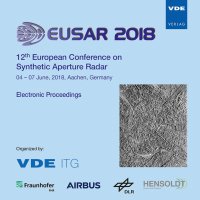Impact of Gaps in the NASA-ISRO SAR Mission Swath
Conference: EUSAR 2018 - 12th European Conference on Synthetic Aperture Radar
06/04/2018 - 06/07/2018 at Aachen, Germany
Proceedings: EUSAR 2018
Pages: 5Language: englishTyp: PDF
Personal VDE Members are entitled to a 10% discount on this title
Authors:
Rosen, Paul A.; Hensley, Scott; Agram, Piyush; Gurrola, Eric; Harcke, Leif; Shaffer, Scott; Veeramachaneni, Chandini (Jet Propulsion Laboratory, California Institute of Technology, USA)
Abstract:
The NASA-ISRO Synthetic Aperture Radar (NISAR) mission will carry L-band and S-band SAR instruments, each with a 240 km swath width. The L-band instrument has the capability to map the entire Earth’s land and ice covered surfaces from both ascending and descending orbit positions, continuously in an exact 12 day repeating cycle, given temporally dense (better than 6-day on average) sampling of Earth over the life of the mission. To achieve this swath coverage without loss of resolution or polarimetric capability, NISAR uses a reflector-feed based antenna system with scan-on-receive (“SweepSAR”) capability. One of the characteristics of SweepSAR is that the pulse repetition interval of the radar is shorter than the echo receive window for the 240 km swath. Therefore, transmit events occur during the receive window and the receivers must be blanked periodically, creating gaps in the coverage. For fixed pulse rate operations, these gaps are persistent strips of blanked ranges. NISAR is being designed to allow variation of the pulse rate in order to spread out these gaps throughout the synthetic aperture, but processing these variably-acquired data is more challenging and can lead to compromises in image quality. At the highest level NISAR places requirements on science measurements rather than image quality, so there is often a debate among science and engineering team members as to whether to operate with fixed pulse rates – leading to range strips consistently blank from cycle to cycle but with optimal image quality – or to vary the pulse rate, fill in the gaps, and live with degraded image quality. NISAR’s performance team has shown that science requirements can be met with the gaps. However, scientists are eager for maximum and coverage within a swath. A companion paper (Villano et al.) describes image quality for NISAR using a variable PRF approach, but does not go further to science requirements. This paper explores the issues when gaps are present in the swath due to fixed PRF operations.


